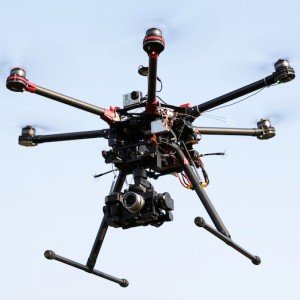Aerobots: Eye in the sky

Hong Kong: With Google and Amazon’s ongoing attempts to develop large-scale, commercial drone delivery services and DHL’s landmark authorization last year to deliver parcels to a small island by autonomous drone, the press is frequently buzzing with articles on the future of drones for package delivery.
But whilst the opportunities for large-scale delivery by drone (or Unmanned Aerial Vehicle as they’re more properly known) are well known, does the current explosion of developments in the UAV sector offer benefits to the wider shipping industry?
“UAVs could be a useful tool in the fight against piracy by arming crews and ship operators with a way of gathering information on a developing situation in a timely manner,” argues Robert Luxton, director of Hong Kong aerial imaging firm, Aerobots.
He points out that the US Navy has been testing technology to help them identify pirate vessels. Using full-sized unmanned helicopters fitted with high-definition cameras, infrared cameras and laser-radar technology (LiDAR), they aim to be able to identify possible threats before they pose a risk. Due to their large size, these UAVs are able to travel vast distances but are only practical for military use.
But what if, Luxton muses, ships had their own smaller UAVs onboard that could be quickly deployed to scout suspected pirate vessels out of visual range?
“A set of eyes in the sky could provide a ship’s crew with timely information, giving them extra time to make evasive maneuvers or prepare against an attack,” he reckons.
Piracy wouldn’t be the only place that ships could benefit from an extra pair of eyes, Luxton says.
For instance, last year, Canadian shipping company FedNav used a drone on board the icebreaker Umiak I to scout ahead of the vessel in the ice-covered waters of the Labrador Coast for potentially dangerous ice formations.
Sikumiut Environmental Management (Sikumiut), an Inuit-owned business registered in Newfoundland, is also looking at the use of UAV technology to help ships detect and avoid marine mammals. They aim to demonstrate that a UAV can be flown from a vessel and can collect video data that is more comprehensive and of better quality than that obtained by human observers.
Another potential use of UAVs is helping out with accidents at sea. Statistics on the number of man overboard incidents within the shipping industry are hard to obtain, but figures from the cruise ship industry show that between 20 and 25 people a year have fallen overboard since 2009.
“UAVs fitted with infrared cameras could be used in man overboard situations to help quickly locate a crewmember who has gone overboard, monitor their position and bring them help,” Luxton suggests.
Then there is the issue of hull inspections. “Whether in dock or out at sea, being able to view, document or scan the surface of the hull could make for faster and safer inspections,” Luxton maintains, adding: “Autonomous robots (ROVs) for below water line inspections and cleaning already exist, but UAVs for use above the waterline could also prove useful, carrying out ultrasonic wall thickness tests, fracture detection and even internal mapping and corrosion documentation.”
Finally there is the marketing aspect that UAVs offer. “Shipping companies have long used shots of ships taken from helicopters that look great, but can be expensive and difficult to coordinate using a full-size manned helicopter. Using a UAV would enable ship operators to quickly capture images of their fleet for documentation or obtain cinematic footage of their ships at sea, or in port,” Luxton points out.
The UAV industry has seen a huge amount of growth in the last couple of years, but it is still an industry in its infancy with developers finding new applications for the technology every day. Currently UAVs are custom built products that can be developed to tackle a range of problems for the shipping industry and other industries, but, Luxton imagines that in the near future, it could well be that purpose-built UAVs for life-saving or piracy detection could be installed by default on ships all across the globe.

